Lake of Murder
On August 21, 1986, a disaster occurred around Lake Nyos in Cameroon, killing nearly 2,000 people and nearly 8,000 animals in just one night. A man traveling from Wum village to Nyos village discovered the disaster.
At first, he saw a dead antelope lying by the roadside. Then, when he entered the village, he discovered the corpses of a dog, two rats, and several others.
The man decided to go to the tents ahead to inquire about the situation and was shocked to find dead bodies lying everywhere. After searching everywhere and finding no survivors, he immediately ran back to Wum to report the news.
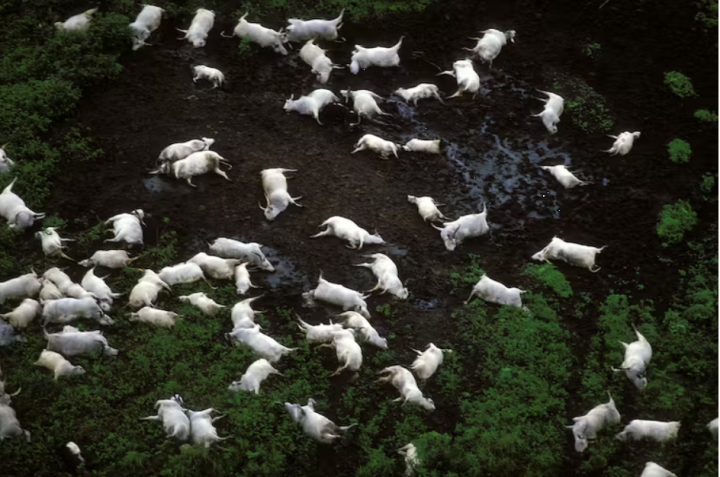
In just one night, the strange lake killed nearly 2,000 people and about 8,000 animals within a 20 km radius. (Photo: smithsonianmag)
After receiving information about the incident, the local government immediately sent police to investigate. According to information from neighboring villages, the police knew that before the incident happened, they heard a very loud sound like a bomb exploding.
Then the air around was filled with a foul smell that made the people fall asleep. They did not know that an unforgettable disaster was about to take place in the village of Nyos.
According to police statistics, the death toll reached more than 1,746. There were no signs on their bodies that showed any injuries or any collision that led to their deaths. In addition, about 8,000 domestic and wild animals also died mysteriously.
Many people say that the people of Nyos village and the animals died because the evil spirit hiding under Lake Nyos escaped.
A team of experts was sent to the scene by the Cameroonian government to help solve the case. During the investigation, the experts found that the victims' bodies were mainly concentrated within a 20km radius around Lake Nyos. The closer to the lake, the more corpses there were.
Notably, most of the dead were in the village of Nyos, which was closest to the lake. Villages farther away from the lake had more survivors.
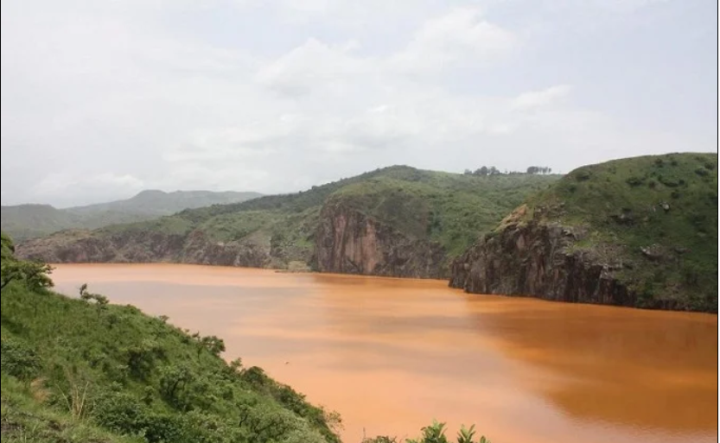
After the disaster, the water of Lake Nyos is turning from blue to red. (Photo: smithsonianmag)
After many days of investigation, scientists hypothesized that because Lake Nyos is located on a volcano's crater, after it became active again, the volcano erupted with toxic gas, causing the disaster.
However, this theory was quickly dismissed as many witnesses said they did not feel any earthquake or shaking. There were also no signs of damage to furniture or houses.
Luckily, they received information that the water in Lake Nyos had turned from blue to red and murky after the big explosion. Finally, the experts found out that the mysterious "culprit" that caused the disaster was Lake Nyos.
Preventing disaster from happening again
In fact, a landslide occurred next to Lake Nyos. This landslide created a tsunami that was 25 meters high and flooded the area around the lake. But, this landslide could not have killed that many people.
At the bottom of Lake Nyos, there is a huge amount of CO2. Lake Nyos was formed on the Cameroon “volcanic line”. This volcanic line may have formed 150 million years ago.
Lake Nyos formed in a volcanic crater. Crater lakes typically have higher than normal concentrations of CO2. The CO2 does not normally leak out, but evaporates as the lake water is replenished during rains.
However, Lake Nyos is extremely calm and is not affected by environmental fluctuations. Instead of releasing CO2, the lake accumulates it like a high-pressure gas storage. In fact, one liter of lake water dissolves more than 5 liters of CO2.
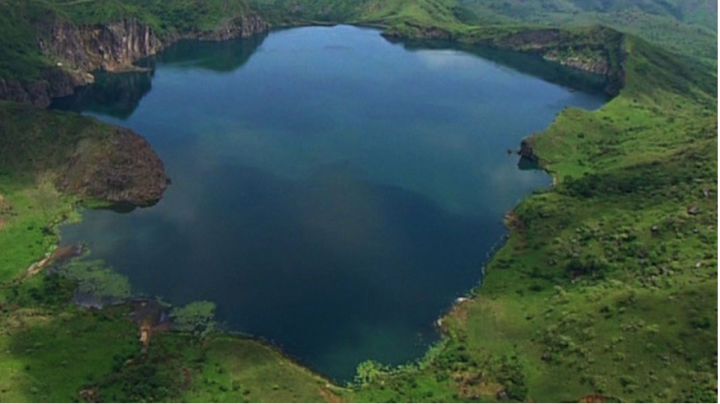
To prevent a recurrence of the disaster, experts have installed many CO2 gas pipelines under the bottom of the lake. (Photo: smithsonianmag)
When the landslide occurred, CO2 at the bottom of the lake rose and shot out of the water. About 1.2 km3 of CO2 was released within 20 seconds, forming a cloud about 100 m high and spreading around. When the CO2 cloud covered the area, all the fires were extinguished. The village of Nyos near the lake barely escaped the disaster.
After the real cause of the nearly 2,000 deaths was discovered, Lake Nyos was closely monitored by scientists and authorities. A CO2 vent pipe was installed at the bottom of the lake. After a successful test in 1995, the vent pipe was officially put into use in 2001.
As of fall 2006, the vent was still operating well and releasing nearly 20 million cubic meters of gas per year, more than the amount of gas entering the lake. Scientists say this reduction is too small.
Another concern is that the natural dam at the north of Lake Nyos is eroding and could collapse within five years. If it fails, 50 million cubic metres of water could spill out of the lake, drowning up to 10,000 people as it surges through the valleys below.
When the lake loses that much water, the water level can drop by up to 40m. The water pressure that holds CO2 at the bottom of the lake will no longer exist, causing another CO2 eruption that is more terrifying than the one in 1986.
Finally, the solution that scientists have urgently implemented is to both reinforce the natural dam with concrete and install four more straws to reduce the amount of CO2 to a safe level.
Quoc Thai (Source: Smithsonianmag)
Useful
Emotion
Creative
Unique
Source





![[Photo] Ho Chi Minh City: Many people release flower lanterns to celebrate Buddha's Birthday](https://vphoto.vietnam.vn/thumb/1200x675/vietnam/resource/IMAGE/2025/5/10/5d57dc648c0f46ffa3b22a3e6e3eac3e)

![[Photo] General Secretary To Lam meets with Chairman of the Federation Council, Parliament of the Russian Federation](https://vphoto.vietnam.vn/thumb/1200x675/vietnam/resource/IMAGE/2025/5/10/2c37f1980bdc48c4a04ca24b5f544b33)








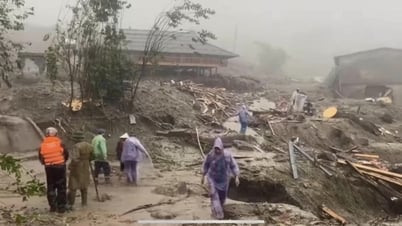

















![[Video] 24-hour news on May 9, 2025: General Secretary To Lam officially visits the Russian Federation and attends the 80th anniversary of Victory Day in the Great Patriotic War](https://vphoto.vietnam.vn/thumb/1200x675/vietnam/resource/IMAGE/2025/5/10/5eaa6504a96747708f2cb7b1a7471fb9)
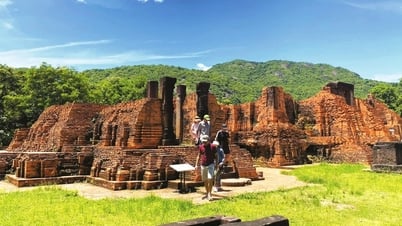






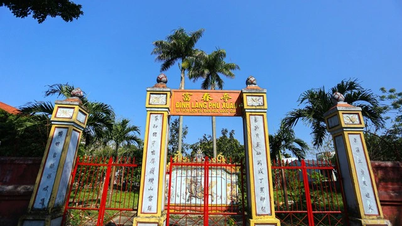







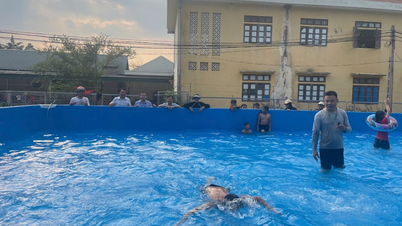



































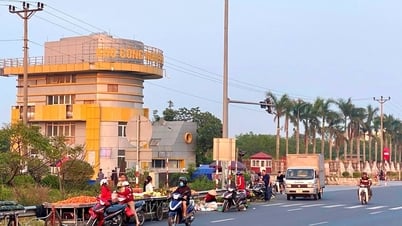


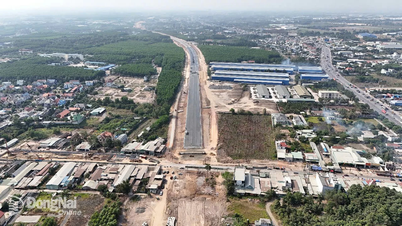










Comment (0)